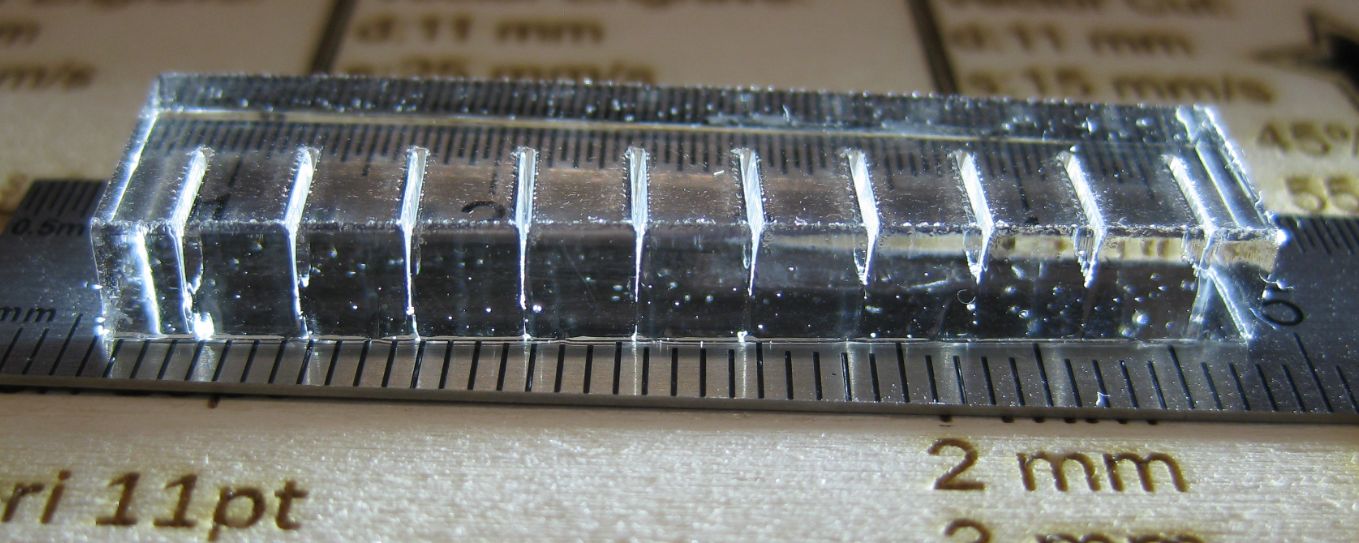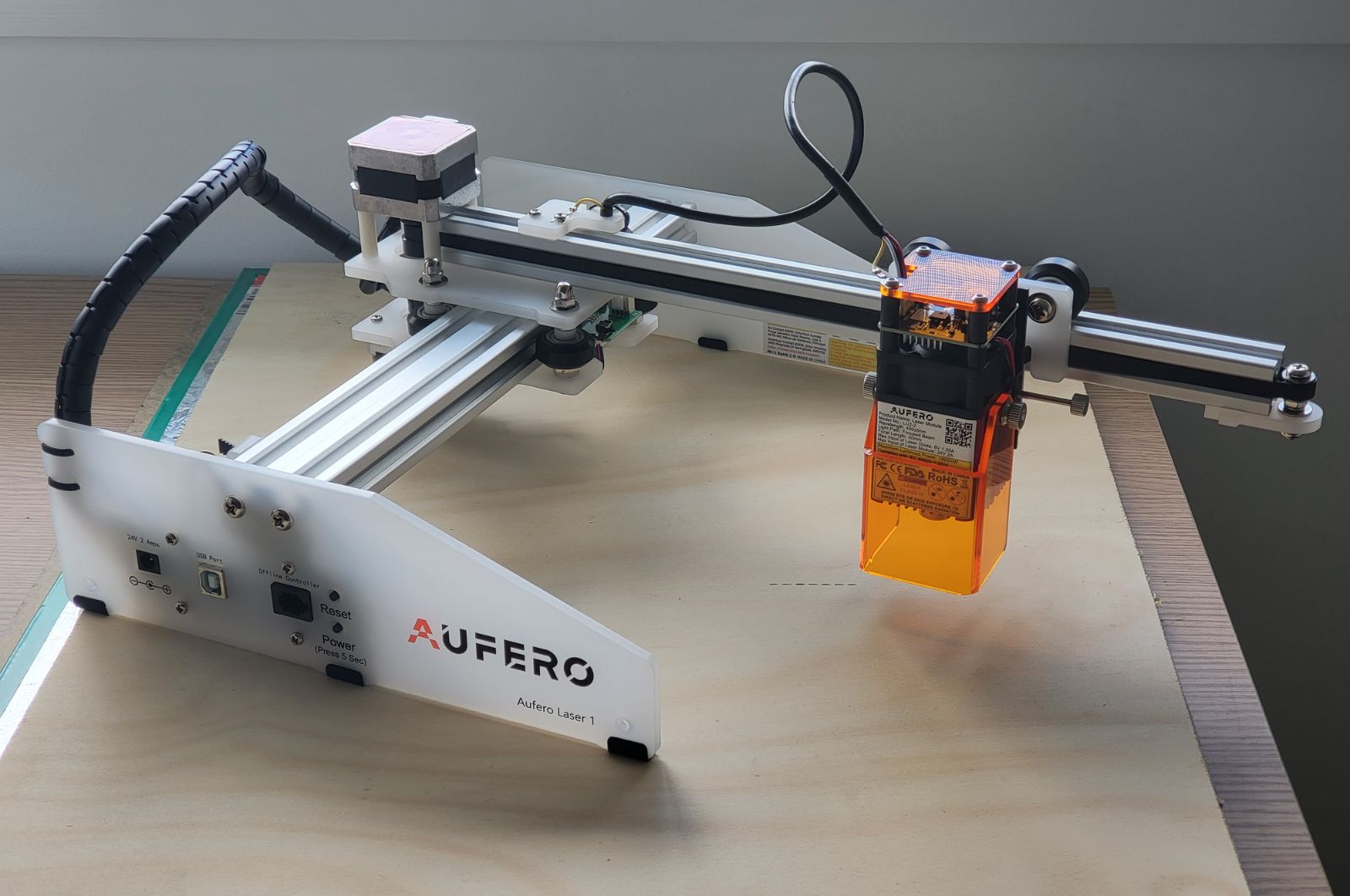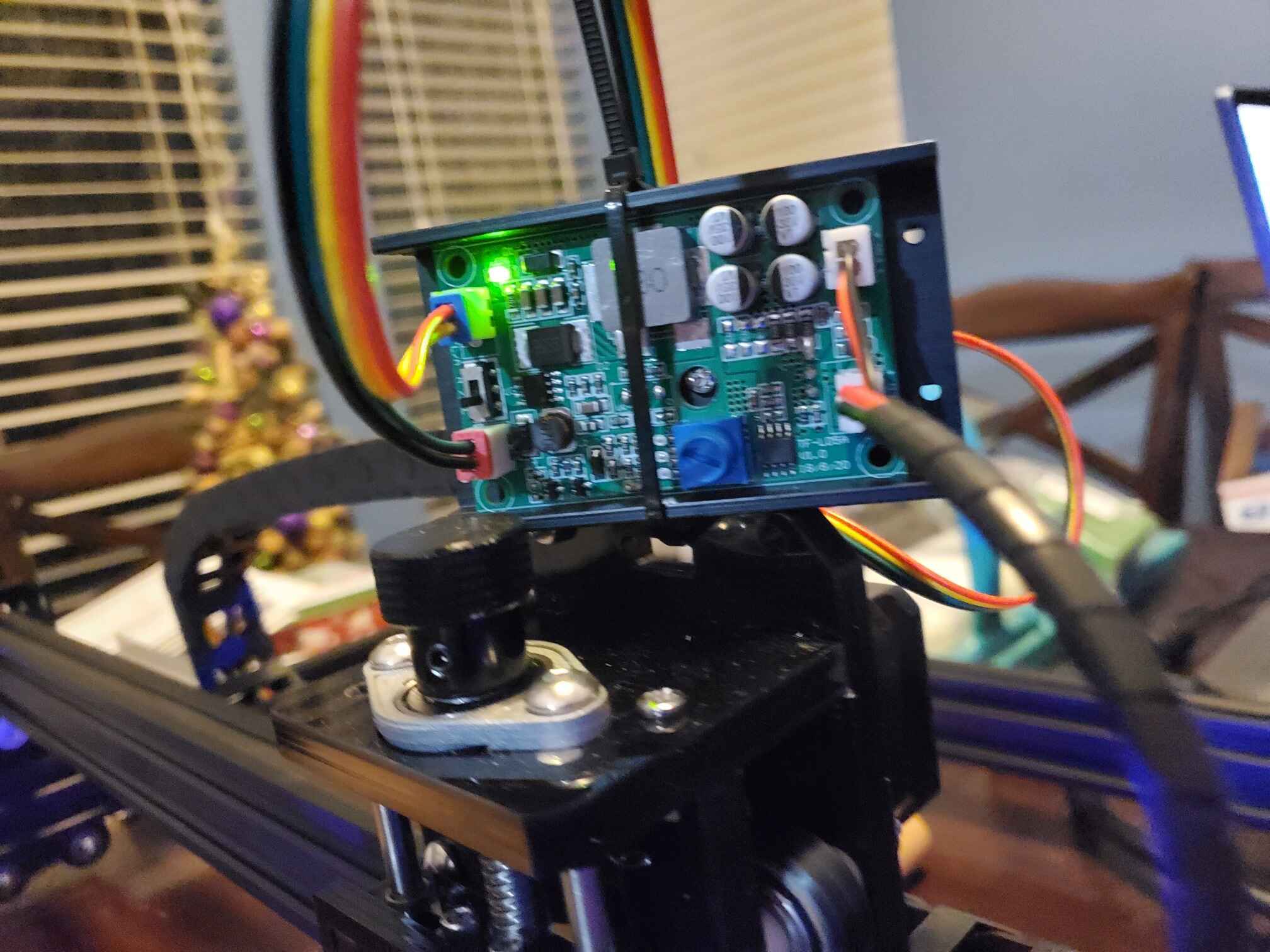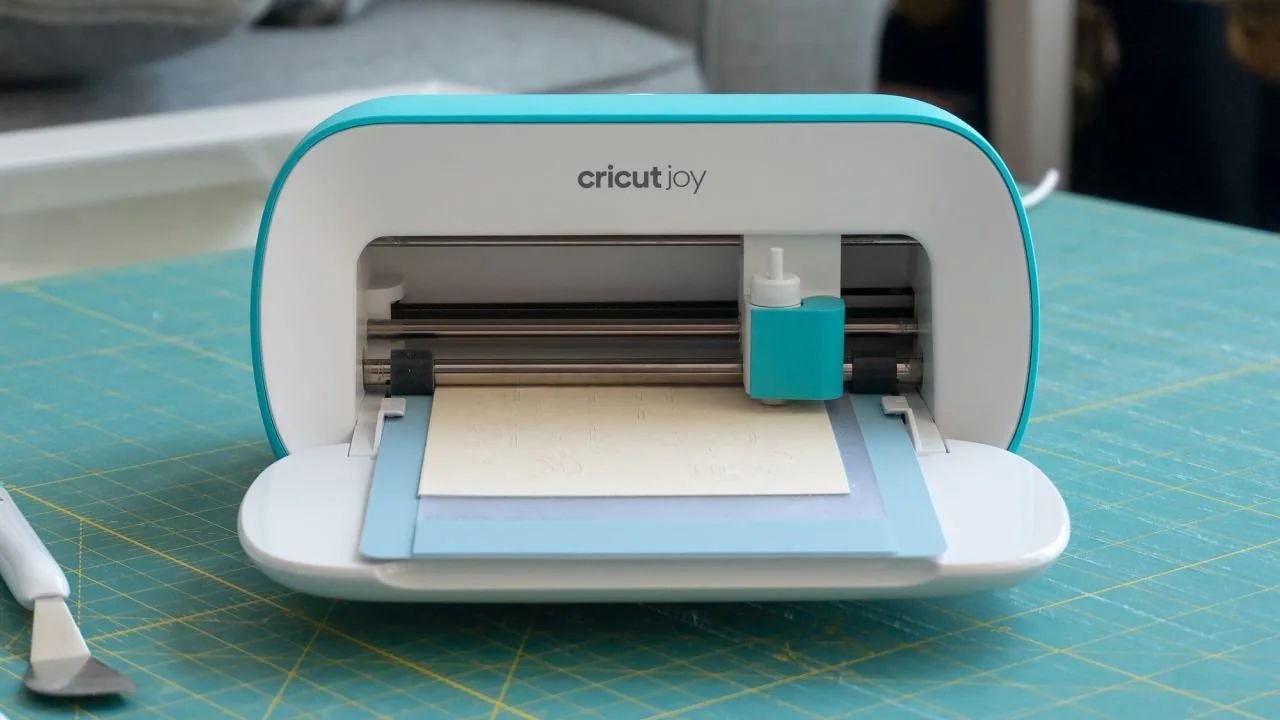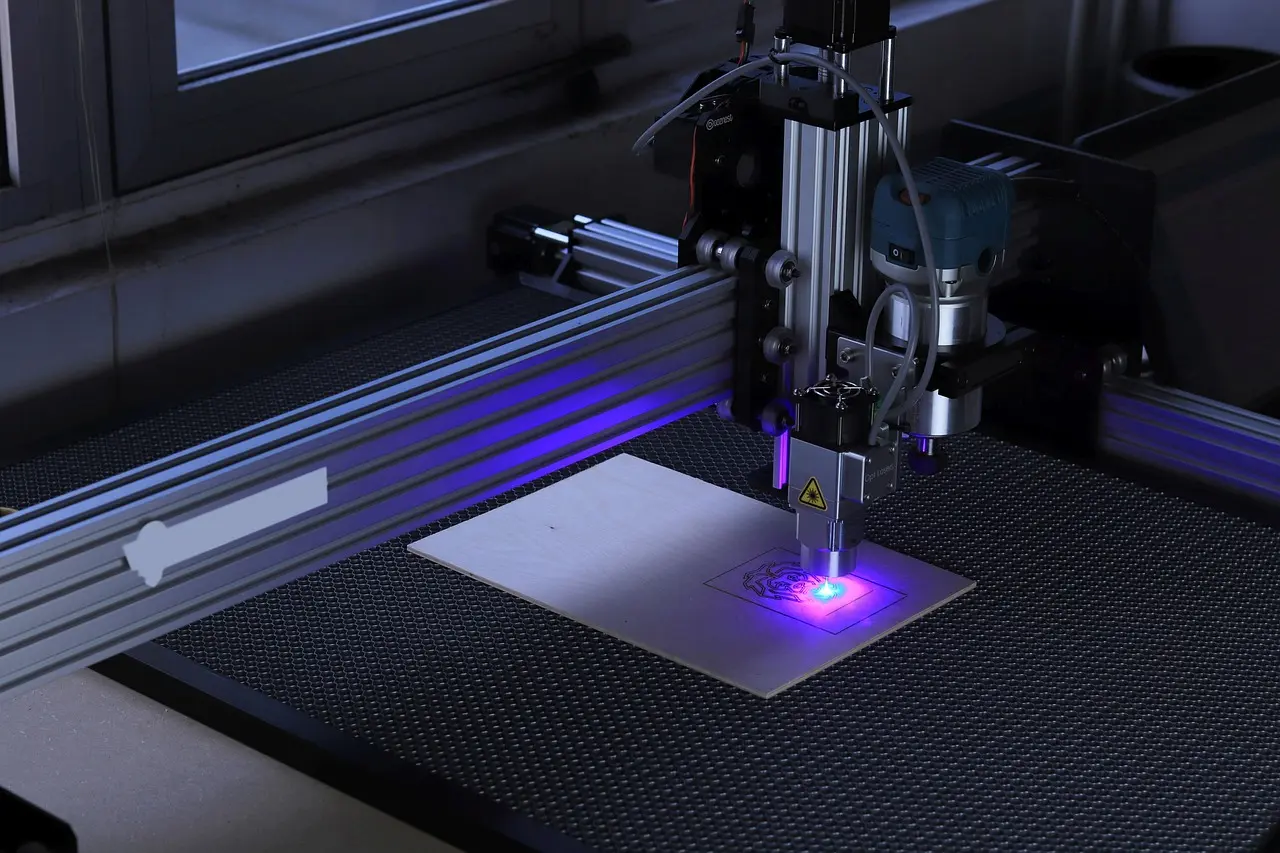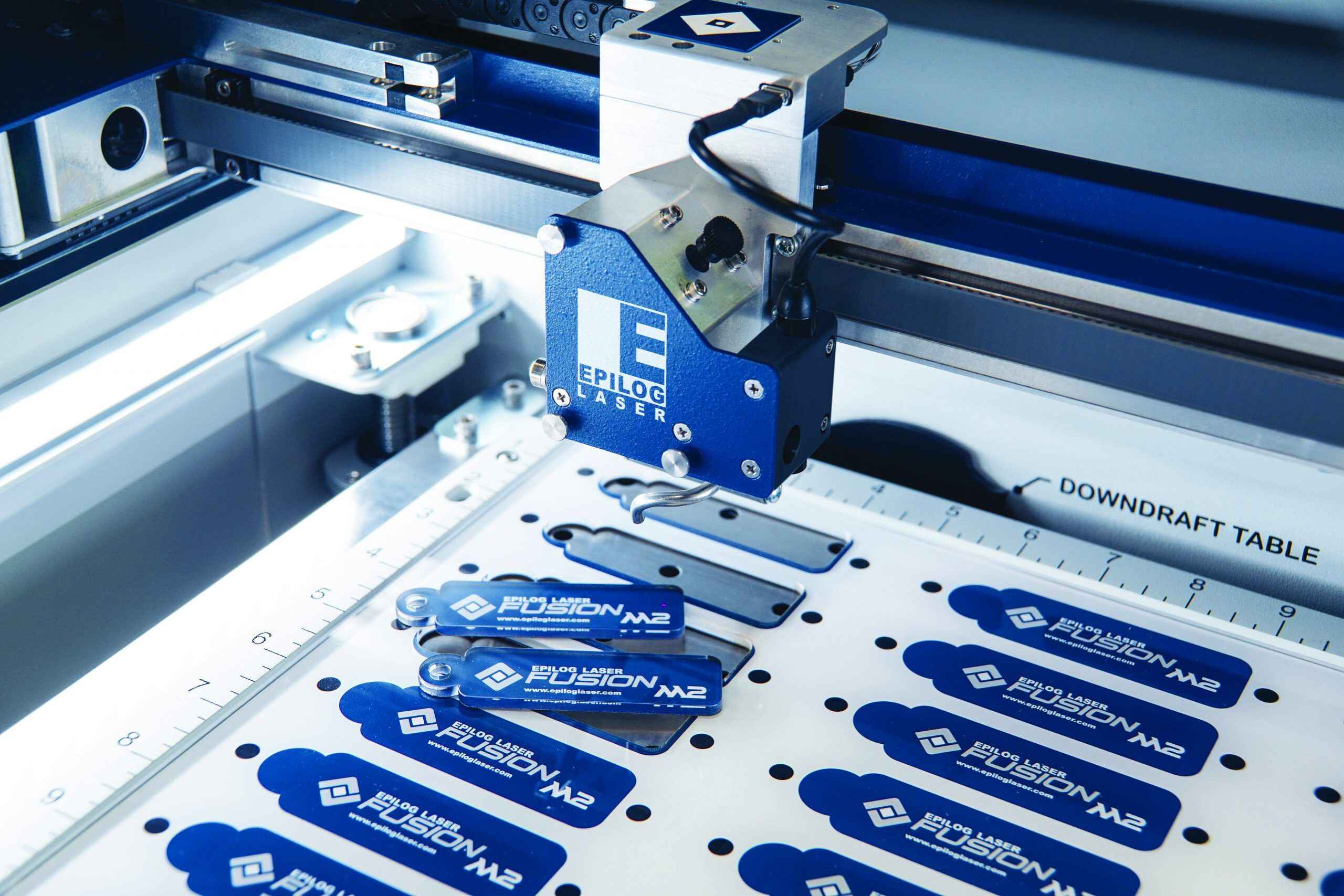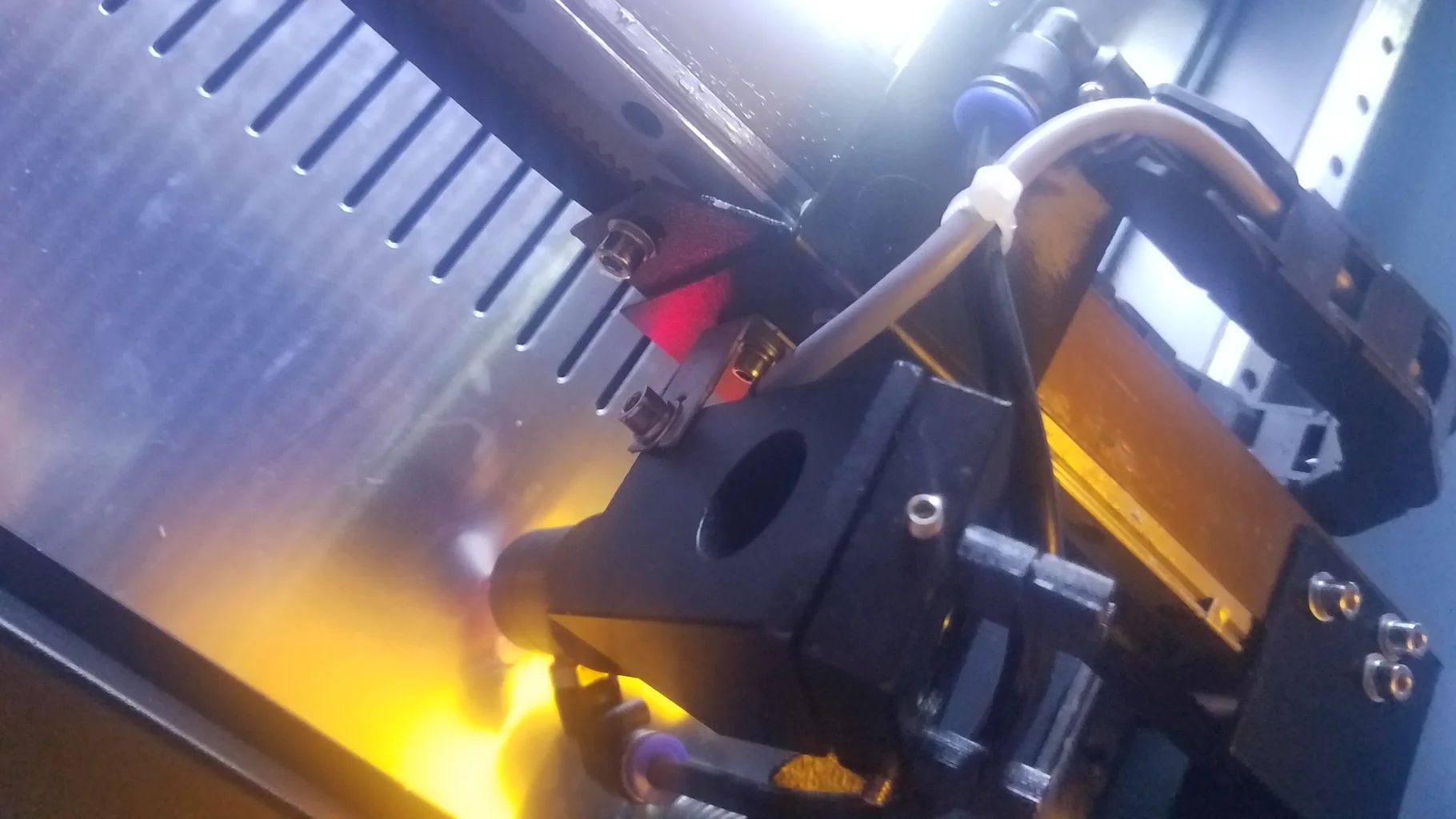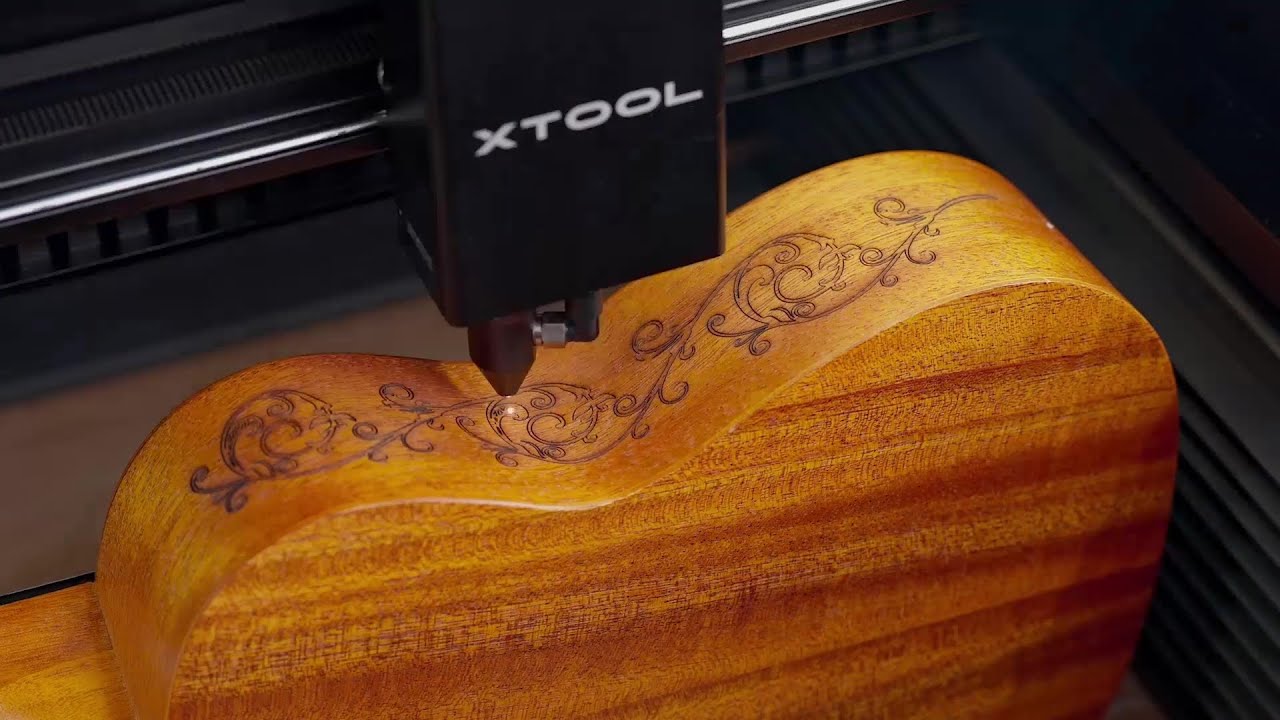Introduction
Welcome to the world of laser engraving, where precision meets creativity. Laser engravers have become increasingly popular among hobbyists, artists, and professionals looking to add a personalized touch to their projects. Whether you’re interested in etching designs on wood, leather, glass, or even metal, laser engraving offers a versatile and efficient solution.
But with the various options available in the market, it’s essential to understand the factors you need to consider before choosing the right laser engraver for your needs. One key consideration is the power of the laser engraver, which determines its capabilities and limitations. In this article, we will delve into the world of laser engraver power and guide you in determining how much power you need for your projects.
Before we delve into the intricacies of laser engraver power, let’s first understand what laser engraving entails. Laser engraving is a process that uses high-powered lasers to remove material from a surface, leaving behind a permanent mark or design. By controlling the intensity and direction of the laser beam, intricate and precise engravings can be etched onto various materials.
Now that we have a basic understanding of laser engraving, let’s explore the factors to consider when choosing a laser engraver that suits your needs and requirements. These factors go beyond just the power of the engraver and encompass various aspects such as material compatibility, size and capacity, depth and speed, versatility and flexibility, as well as cost and affordability. By evaluating these factors, you can make an informed decision regarding the ideal power for your laser engraving projects.
What is Laser Engraving?
Laser engraving is a precise and efficient method of creating permanent marks, designs, or text on a wide range of materials. It involves using a high-powered laser beam to remove material from the surface, resulting in a permanent etching. This technology has revolutionized the world of customization, allowing individuals to add a personalized touch to various items.
The process begins with a design or pattern being created using graphic software. This design is then uploaded to the laser engraving machine, which incorporates a powerful laser beam. The laser beam is guided by mirrors and lenses to precisely focus the energy onto the surface of the material, effectively vaporizing or discoloring the material, depending on its composition.
One of the key advantages of laser engraving is its versatility. It can be used on a wide range of materials, including wood, leather, glass, acrylic, plastic, and even metal. This makes it suitable for engraving diverse items such as signage, awards, promotional items, jewelry, and personalized gifts.
The precision of laser engraving is unmatched by traditional engraving methods. The laser beam can create intricate and detailed designs with remarkable accuracy. This opens up a world of opportunities for artists, jewelry makers, and craftsmen to bring their creative visions to life.
Another significant advantage of laser engraving is its non-contact nature. Unlike mechanical engraving methods, such as rotary engraving, laser engraving does not require direct physical contact with the material. This eliminates the risk of damage or distortion that can occur with delicate or fragile objects.
Additionally, laser engraving allows for quick and efficient processing. The speed and depth of the engraving can be adjusted to suit the desired outcome, allowing for consistency and precision in large-scale production.
Overall, laser engraving offers a versatile, precise, and efficient method of adding permanent marks or designs to various materials. Its ability to create intricate details and its wide range of material compatibility make it an ideal choice for individuals and businesses looking to personalize and customize their products. In the following sections, we will explore the factors to consider when choosing a laser engraver, with a particular focus on the power requirements for different applications.
Factors to Consider
When choosing a laser engraver, several factors need to be considered to ensure that it aligns with your specific needs and requirements. These factors go beyond just the power of the engraver and encompass various aspects that will determine the efficiency, versatility, and overall performance of the machine. Let’s explore these key factors:
Material Compatibility: Different laser engravers are designed to work with specific materials. It’s important to consider the types of materials you plan to engrave and ensure that the laser engraver you choose is compatible with those materials. Some engravers are specifically designed for wood, while others are more suitable for metals, plastics, or fabrics. Compatibility with a wide variety of materials will provide you with the flexibility to work on various projects.
Size and Capacity: The physical dimensions and working area of the laser engraver are crucial factors to consider. If you often work on large or bulky items, you’ll need a machine with a larger bed size to accommodate them. Additionally, consider the maximum thickness the laser engraver can handle as this will determine the depth of the engravings you can achieve.
Depth and Speed: The power of the laser engraver plays a significant role in determining the depth and speed at which the engravings can be made. Higher power lasers can achieve deeper engravings in a shorter amount of time. However, it’s important to find the right balance between power, depth, and speed to maintain accuracy and precision in your work.
Versatility and Flexibility: Depending on your intended applications, it’s important to consider the versatility of the laser engraver. Can it handle both large-scale production projects and intricate details? Does it offer different engraving modes, such as raster and vector engraving? Look for a machine that offers flexibility and can adapt to various project requirements.
Cost and Affordability: Laser engravers come in a wide range of prices, depending on their capabilities and features. It is important to evaluate your budget and choose a machine that offers the necessary functionality within your price range. Consider factors such as maintenance costs, replacement parts availability, and overall value for money.
By carefully considering these factors, you can make an informed decision and choose a laser engraver that meets your specific needs. In the next sections, we will explore the different types of laser engravers available in the market and delve deeper into the power requirements for different applications.
Material Compatibility
When choosing a laser engraver, it’s crucial to consider the compatibility of the machine with the materials you plan to work with. Laser engravers are designed to accommodate specific types of materials, and using the wrong machine can result in subpar engraving quality or even damage to the material.
Wood is one of the most common materials used in laser engraving. Different types of wood, such as plywood, hardwood, and MDF, have varying densities and compositions, which can affect the engraving process. It’s important to choose a laser engraver that can provide clean and precise engravings on wood without causing excessive burning or scorching.
Metal engraving requires laser engravers with higher power outputs due to the reflective nature of metals. CO2 laser engravers are not typically suitable for engraving metal, as they are best suited for non-metallic materials. Fiber laser engravers, on the other hand, are specifically designed for metal engraving and can provide exceptional results on materials like stainless steel, aluminum, and brass.
Plastics and acrylics offer a wide array of options for laser engraving. From clear acrylic to colored plastics, laser engravers can create intricate designs and markings on these materials. However, some plastics may release harmful fumes when engraved with a laser. It’s important to choose a machine with proper ventilation or work in a well-ventilated area to ensure safety when working with these materials.
Glass and ceramics offer unique opportunities for laser engraving, providing elegant and delicate engravings. Laser engravers equipped with high-power CO2 lasers can etch fine details on glass surfaces without shattering or cracking the material.
Other materials, such as leather, fabric, rubber, and even stone, can also be engraved using laser technology. Each material presents its own challenges and requirements, and it’s essential to choose a laser engraver that is capable of accommodating the specific material you plan to work with.
Before purchasing a laser engraver, it’s advisable to research and test the machine’s compatibility with the materials you intend to use. Look for user reviews, samples, or demonstrations to ensure that the laser engraver can provide the desired results on your preferred materials.
By choosing a laser engraver that is compatible with the materials you plan to work with, you can ensure the highest quality engravings while avoiding any potential damage or safety hazards.
Size and Capacity
The size and capacity of a laser engraver are crucial considerations when choosing the right machine for your projects. The physical dimensions of the engraver and its working area will directly impact the types and sizes of materials you can work with.
Firstly, consider the overall footprint of the laser engraver and whether it can fit within your workspace. Measure the available space, including any necessary clearance for ventilation or maintenance access, to ensure that the engraver can be accommodated comfortably.
Next, take into account the working area or bed size of the laser engraver. The working area represents the maximum dimensions of the material that can be placed inside the machine for engraving. If you frequently work on large or bulky items, such as signage or furniture pieces, you’ll need a machine with a larger bed size to accommodate them.
Additionally, consider the maximum thickness that the laser engraver can handle. This will determine the depth of engravings you can achieve. If you plan to work on thicker materials, such as wooden boards or acrylic sheets, make sure the engraver can accommodate the depth requirements.
It’s also worth considering the load capacity of the engraver. Some machines have weight restrictions, meaning that they may not be able to handle heavier materials. If you plan to work with dense or heavy materials, such as metal or stone, ensure that the engraver has the capacity to bear the weight.
Keep in mind that larger machines with a larger working area and higher load capacity usually come at a higher price. It’s important to strike a balance between the size and capacity you require for your projects and your budget.
Ultimately, choosing a laser engraver with the appropriate size and capacity will allow you to work comfortably with the materials you intend to engrave. It will also ensure that you can efficiently manage various project sizes and achieve the desired results while maintaining the required precision and accuracy.
Depth and Speed
The depth and speed capabilities of a laser engraver are important factors to consider when choosing the right machine for your specific engraving needs. These factors determine the efficiency, precision, and overall quality of the engravings.
The power of the laser engraver plays a significant role in determining the depth of the engravings. Higher power lasers can achieve deeper engravings in a shorter amount of time. However, it’s important to find the right balance between power, depth, and speed to maintain accuracy and precision in your work.
When engraving, consider the depth requirement for your projects. Are you looking to create shallow surface engravings or do you need deeper cuts? Different applications, such as decorative engravings on wood or serial numbers on metal, will have varying depth requirements. Ensure that the laser engraver you choose has the power and control settings necessary to achieve the desired depth.
Speed is another crucial consideration. It refers to the rate at which the laser moves across the working area, determining how quickly the engravings are made. Higher speed engraving can result in faster completion of projects, making it ideal for large-scale production or time-sensitive projects. However, faster speed may compromise the level of detail and precision in intricate designs. The ability to adjust the speed settings on the laser engraver allows you to find the optimal balance between speed and quality for your specific projects.
Additionally, the type of material being engraved can affect the speed and depth capabilities. Softer materials like wood or leather may allow for faster speeds, while harder materials like metal or glass may require slower speeds to achieve desired results without damaging the material.
It’s crucial to experiment and test the speed and depth settings on your laser engraver to find the optimal parameters for each material and project. Keep in mind that finding the right combination of speed and depth may involve a trial-and-error process.
By understanding the depth and speed capabilities of a laser engraver, you can select a machine that aligns with your specific engraving requirements. Whether you need quick surface engravings or deep cuts, finding the appropriate balance will ensure that your engravings are accurate, precise, and completed efficiently.
Versatility and Flexibility
When choosing a laser engraver, it’s important to consider the machine’s versatility and flexibility to accommodate a variety of engraving projects. The ability to handle different materials, sizes, and engraving techniques allows for greater creative freedom and expands the range of applications for the machine.
Consider the types of materials you plan to engrave and ensure that the laser engraver is compatible with them. Some machines are specifically designed for wood, while others can handle materials like metals, plastics, ceramics, or fabrics. Opting for a versatile laser engraver allows you to work on diverse projects and explore different creative avenues.
Flexibility in terms of working area or bed size is another crucial aspect. A laser engraver with a larger bed size provides the opportunity to work on larger or bulkier items such as furniture pieces or signage. This allows for more flexibility in terms of project size and opens up possibilities for customized or personalized engravings on various objects.
Consider the different engraving techniques that the laser engraver can offer. Raster engraving, which involves etching the surface with a series of closely spaced parallel lines, is ideal for creating shading or textures. Vector engraving, on the other hand, uses precise paths to create clean and crisp outlines, ideal for intricate designs or text. Having the ability to switch between these techniques allows for greater flexibility in achieving different engraving effects.
Some laser engravers also offer additional features, such as the option to use rotary attachments. This enables the engraver to work on cylindrical objects like bottles or cups, adding another layer of versatility to the machine.
Flexibility also extends to the software compatibility of the laser engraver. Consider whether the machine is compatible with popular design software, allowing for seamless integration and easy transfer of design files. This ensures a smoother workflow and makes it easier to create and import designs for engraving.
Choosing a laser engraver that offers versatility and flexibility allows you to explore and experiment with different materials, sizes, and engraving techniques. This expands the possibilities for your projects and allows for greater creativity and customization.
Cost and Affordability
Cost and affordability are important factors to consider when selecting a laser engraver. The price range for laser engravers can vary significantly depending on their capabilities, features, and brand reputation. It’s crucial to evaluate your budget and choose a machine that offers the necessary functionality within your price range.
When considering the cost of a laser engraver, it’s essential to look beyond the upfront price. Consider the long-term costs associated with owning and maintaining the machine. This includes factors such as ongoing maintenance costs, replacing consumables like laser tubes or lenses, and the availability of spare parts. Research the brand’s reputation for reliability and after-sales support to ensure that you are investing in a machine that will provide value for money in the long run.
Another aspect to consider is the return on investment (ROI). Evaluate how the laser engraver will contribute to your business or personal projects, and whether the machine will provide a sufficient ROI in terms of time saved, increased productivity, or the ability to offer additional engraving services. A higher-priced machine may offer advanced features or faster speeds, which can significantly impact your productivity and potential income.
Additionally, consider the affordability of materials needed for engraving. Different materials require specific settings and consumables, such as specific laser engraving materials or coatings, which can add to the overall cost. Assess the availability and cost of these materials in your area to ensure that they fit within your budget.
It’s also worth exploring financing options or leasing programs for laser engravers. Some manufacturers or distributors offer flexible payment plans that can help spread the cost over a longer period, making the machine more affordable in the short term.
Ultimately, the goal is to find a laser engraver that offers the necessary functionality, reliability, and long-term value within your budget. Comparing different options, reading customer reviews and testimonials, and seeking recommendations from experienced users can help you make an informed decision.
Remember, while affordability is important, it’s equally crucial to consider the quality and capabilities of the laser engraver to ensure that it meets your specific engraving needs and provides the desired results for your projects.
Types of Laser Engravers
When it comes to laser engravers, there are two main types: fiber laser engravers and CO2 laser engravers. Each type has its own unique characteristics, advantages, and limitations. Understanding these differences is crucial in choosing the right machine for your specific engraving needs.
Fiber Laser Engravers: Fiber laser engravers are known for their high power and precise engraving capabilities. They use fiber optic technology to generate the laser beam, which is then focused onto the material being engraved. Fiber lasers are particularly effective for engraving metals, such as stainless steel, aluminum, brass, and more. They offer exceptional detail and can engrave with high speed and accuracy. Fiber laser engravers are often used in industrial applications, where productivity and high-quality engravings are required.
CO2 Laser Engravers: CO2 laser engravers use carbon dioxide gas to generate the laser beam. They are versatile machines that can work on a wide range of materials, including wood, acrylic, leather, paper, fabric, and more. CO2 lasers are less effective for engraving metals due to their lower power compared to fiber lasers. However, they excel in creating intricate designs, decorative patterns, and customizations on various materials. CO2 laser engravers are popular among hobbyists, artists, and small businesses due to their affordability and versatility.
Both fiber laser engravers and CO2 laser engravers have their own advantages and considerations. Fiber lasers provide greater power and are ideal for metal engraving and industrial use, but they come at a higher cost. CO2 lasers offer versatility, affordability, and the ability to work on a wide range of materials, making them suitable for various artistic and creative applications.
It’s essential to assess your specific engraving needs and the materials you plan to work with to determine which type of laser engraver is the most suitable for your projects. Consider factors such as material compatibility, desired level of detail, power requirements, and budget constraints.
Furthermore, it’s worth noting that there are also desktop-sized laser engravers available that are more compact and designed for small-scale projects. These smaller machines often utilize CO2 lasers and are suitable for hobbyists, artisans, or individuals looking to engrave smaller items or prototypes.
By understanding the different types of laser engravers and their capabilities, you can make an informed decision and select the ideal machine for your precise engraving requirements.
Fiber Laser Engravers
Fiber laser engravers are known for their exceptional power and precision in the world of laser engraving. They utilize fiber optic technology to generate the laser beam, resulting in highly controlled and focused engraving capabilities. These machines are particularly well-suited for engraving on metals, making them a popular choice in industrial applications.
One of the key advantages of fiber laser engravers is their high power output. They can generate intense laser beams that are capable of engraving with great speed and accuracy. This makes them ideal for tasks that require deep engraving or fast production rates. Whether you’re working on stainless steel, aluminum, brass, or other metal surfaces, fiber lasers can create detailed and precise engravings with ease.
The precision of fiber laser engravers is unmatched, enabling the creation of intricate designs and fine details in the engravings. The focused laser beam allows for clean and sharp lines, even on challenging materials. This precision also enhances the ability to engrave small text or intricate patterns, catering to diverse engraving needs in industries such as jewelry, automotive, and medical devices.
Additionally, fiber laser engravers offer exceptional reliability and durability. The fiber optic technology used in these machines is highly efficient and has a longer lifespan compared to other laser types. This translates into reduced maintenance and replacement costs, allowing for a more cost-effective operation in the long run.
While fiber laser engravers excel in metal engraving, they may not be as versatile when it comes to other materials. The high power of fiber lasers can be too intense for non-metallic materials like wood, plastic, or acrylic, resulting in melting or charring. Therefore, if you primarily work with non-metallic materials, a CO2 laser engraver might be a more suitable choice.
Fiber laser engravers are often larger and more expensive compared to CO2 laser engravers, primarily due to their higher power and specialized capabilities. These machines are frequently utilized in industrial settings where productivity, speed, and precision are paramount.
By choosing a fiber laser engraver, you can be confident in achieving top-quality engravings on metal surfaces. Their exceptional power, precision, and reliability make them an ideal choice for professionals and industries requiring intricate metal engravings, ensuring outstanding results every time.
CO2 Laser Engravers
CO2 laser engravers are popular machines known for their versatility and wide application range. These engravers use carbon dioxide gas to generate the laser beam, making them suitable for engraving on various materials including wood, acrylic, leather, paper, fabric, and more.
One of the key advantages of CO2 laser engravers is their versatility. They can work on a wide range of materials, offering the flexibility to handle different engraving projects. Whether you’re creating intricate designs on wood, etching logos on acrylic, or customizing fabric, a CO2 laser engraver can achieve high-quality and detailed results.
CO2 lasers excel in creating smooth and precise engravings. The laser beam can be focused to a very fine point, allowing for intricate and accurate cuts and engraving lines. This precision is especially important for detailed designs, text, or graphics, where a high degree of control is necessary.
Another advantage of CO2 laser engravers is their affordability compared to other laser engraver types. CO2 lasers are typically more cost-effective, making them a suitable choice for small businesses, hobbyists, and artisans. They offer a cost-efficient solution for those looking to explore laser engraving without breaking the bank.
CO2 laser engravers are also relatively user-friendly. They are equipped with user interfaces that allow for easy control and adjustment of settings, making it accessible for beginners to operate. In addition, the software compatibility of CO2 laser engravers is often widespread, supporting popular design programs and allowing for seamless integration into various workflows.
However, CO2 laser engravers may not have the high power output required for engraving on certain materials, especially metals. Their lower power compared to fiber lasers limits their effectiveness in engraving on harder and more reflective surfaces. If metal engraving is a primary focus, a fiber laser engraver would be a more suitable choice.
When considering a CO2 laser engraver, it’s important to check the maximum power output and the bed size to ensure it meets your specific engraving needs. It’s also worth considering the availability and affordability of CO2 laser engraving materials and consumables.
In summary, CO2 laser engravers offer versatility, affordability, and precision for a wide range of engraving applications. From intricate designs on wood to detailed engravings on acrylic, these machines provide a cost-effective solution for individuals, small businesses, and artisans looking to explore the world of laser engraving on non-metallic materials.
How Much Power Do I Need?
Determining the ideal power for your laser engraver depends on several factors, including the materials you plan to engrave, the depth and speed of your desired engravings, and the level of detail you want to achieve. Choosing the right power ensures that your laser engraver can handle the specific demands of your projects while providing the best possible results.
Higher-power laser engravers, typically above 40 watts, are well-suited for engraving on dense and hard materials like metals. If you primarily work with materials such as stainless steel, aluminum, or brass, a higher-power fiber laser engraver would be the recommended choice to achieve deep, precise engravings efficiently. These machines can engrave at faster speeds, allowing for increased productivity in industrial or commercial applications.
For engraving on non-metallic materials like wood, acrylic, or fabric, a CO2 laser engraver with a power range between 30 and 60 watts is usually sufficient. The greater precision and details required, the higher the recommended power within this range. Lower-power CO2 lasers, around 20 watts, are still suitable for engraving on softer materials, but they may struggle to achieve deep or fast engravings. They are commonly used by hobbyists or for small-scale personal projects.
It’s important to note that while high-power lasers are capable of engraving at faster speeds and achieving deeper engravings, they may generate more heat and potentially cause material damage if not properly controlled. Understanding the limits of your chosen laser power and finding the right balance between speed, depth, and material compatibility is crucial for obtaining optimal results during engraving.
It’s recommended to consider the versatility of your projects when determining the laser power needed. If you work on a diverse range of materials or require different levels of detail, choosing a laser engraver with adjustable power settings can provide the flexibility needed for various applications. This allows you to customize the power output to suit specific materials or engraving requirements.
To determine the power needed, it’s advisable to consult the manufacturer’s recommendations, seek professional advice, or consider testing samples on your intended materials to assess the quality and level of engraving achievable at different power levels.
Ultimately, finding the optimal power for your laser engraver depends on the specific requirements of your projects. Evaluating the material types, desired depth and speed, and level of detail will guide you in choosing the laser power that ensures efficient and high-quality engraving results.
Conclusion
Choosing the right power for your laser engraver is a crucial decision that will greatly impact the quality and efficiency of your engraving projects. Understanding the factors to consider, such as material compatibility, size and capacity, depth and speed, versatility and flexibility, as well as cost and affordability, allows you to make an informed decision.
Whether you opt for a high-power fiber laser engraver for metal engraving or a versatile CO2 laser engraver for non-metallic materials, selecting a machine that aligns with your specific needs is key. Consider the materials you plan to engrave, the level of detail required, and the desired depths and speeds for your projects. Personalization, customization, and intricacy can all be achieved through careful consideration of the power range that suits your engraving needs best.
Additionally, be mindful of your budget and long-term costs associated with the laser engraver. Consider the availability and affordability of consumables and spare parts, as well as any warranty, maintenance, or technical support offered by the manufacturer or distributor.
Remember, every project is unique, and the power requirements may vary. It’s essential to experiment and test different power settings to find the optimal balance between speed, depth, and precision for your specific materials and designs. By doing so, you can achieve outstanding results and unlock the true potential of laser engraving in bringing your creative visions to life.
So, take your time to research, compare different options, consider your specific needs, and choose the laser engraver with the appropriate power that will elevate your engraving capabilities and meet the demands of your projects.







